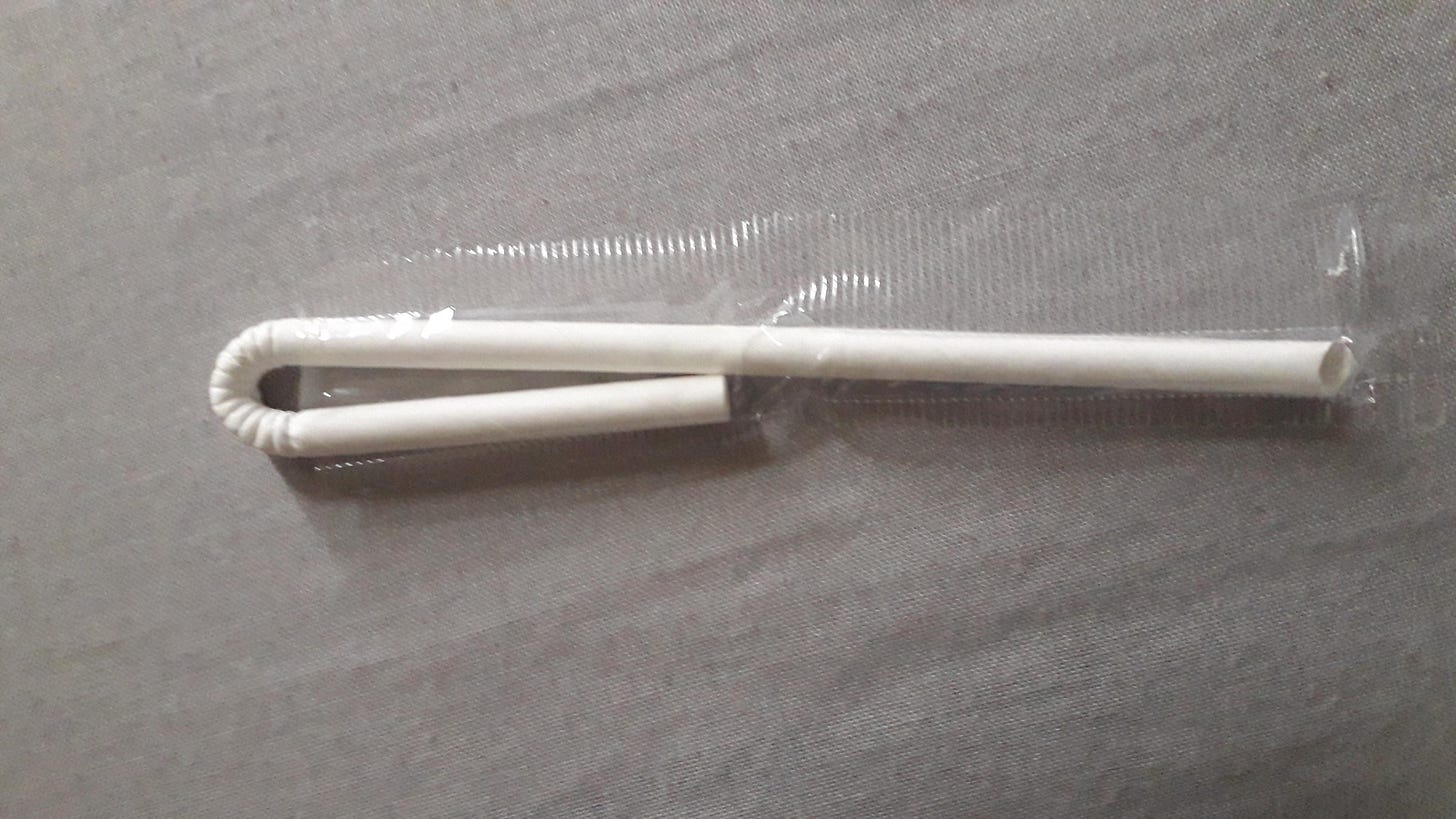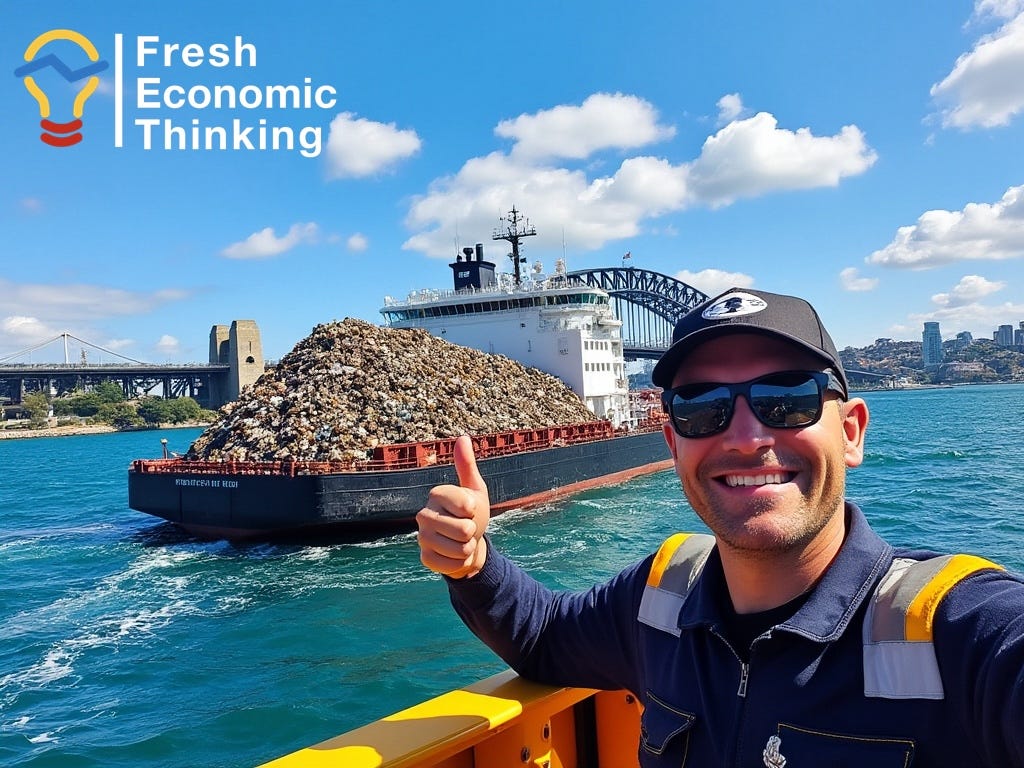Waste is great! Food waste is better. Why is this simple economic logic so hard to see?
Remember, waste must be defined economically, not materially
We have a terrible understanding of the word waste.
It’s a noun, a verb, and an adjective. Yet all definitions boil down to personal interpretations.
Conceptually we never really hone in on what we mean to waste something, or for something to be waste.
I argue here that waste is, at its core, defined economically.
Unwanted stuff is waste. If someone changes their mind and wants the stuff, then it is no longer waste.
A consequence of my argument is that it is impossible to point to a physical object and classify it as waste.
Only the economic uses of the object make it so.
One issue that occupies the minds of environmentalists from across the political spectrum is food waste. Around one-third of all food produced for human consumption is never eaten. To environmentalists, this is astonishing and terrible.
Another concern is wasteful over-packaging. Surely, the product being packaged is not waste but the packaging is. But is that what an economic definition shows?
I consider myself an environmentalist. I wish waste were simple. But I’ve come to the conclusion that without an economic approach the concept of waste cannot be useful, and that our economic approach needs to consider the system as a whole, not just specific parts of it.
Please like, share, comment and subscribe to help support FET, Australia’s newest and most fiercely independent think-tank.
Waste is an economic concept
Food packaging is often thought of as waste. With the rise of online delivery, many of us are seeing first-hand the volume of material used for packaging and transporting goods around the world.
It seems so wasteful!
What happens, however, if we consider a world without packaging? Would that lead to more food (and other products) wasted from breakages and spoiling between growing, transporting, processing and retailing?
If packaging is economically wasteful, would it not make sense for businesses to reduce such unnecessary costs?
Sure, there might be better ways to package things. But there is a real tangible value to all that packaging.
I remember dumpster diving and finding amazing products thrown out at the local shopping centre. It puzzled me at the time. Why they would do that?
It took me a while to realise that redistributing that product elsewhere to be sold at a run-out price would cost more than it would earn. It would be more wasteful to use the time, vehicles, space, energy and labour to relocate that product and sell it than to dump it.
Such wasted products (or whatever we should call it) also signal to producers and retailers what types of goods are in demand and to what amount.
Waste here is a feature of an effective production and distribution system, not a bug of one part of the system.
Consider that in our battle against waste (or more specifically, litter) we have outlawed disposable plastic straws.
Now, we get paper straws that are packaged in plastic to protect them during distribution to get perfectly preserved paper straws that don’t even perform the function that we value.
Surely this is more wasteful, economically and in terms of what we value, than a straw that does work, regardless of the material it is made from.

Waste is insurance
Another economic dimension of waste is even harder to see, but perhaps more important when thinking about the system of production and distribution.
Before we get to it, consider this statement—saving money is a waste of income.
Why keep money you don’t immediately need?
In this simple financial situation, it is easy to see that saving is not a waste. It creates a buffer stock of money to help deal with future risks both expected or unexpected.
But what we think of as waste can also be a very valuable physical buffer stock to deal with risk.
When I teach my economics students about real options we look at many examples of investments that look like waste in retrospect but were sensible investments in physical insurance.
Think about the military.
We devote a couple of per cent of GDP and about 50,000 people and all the fuel, machines, bases, and resource inputs necessary to sustain it.
But most of the time it is not needed. It is a waste of resources.
However, when there is a low probability event in the future when we do need it, all that resource waste suddenly becomes a great investment to insure against future risks that can’t be insured in other ways (i.e. it is not good putting money aside for a military as insurance, you must constantly spend the resource to have it ready when you need it).
To bring this abstract idea of waste as insurance back to something more concrete, consider food waste—food that produced and never eaten. Minimising food waste is a popular concern.
But when we look through the economic lens of waste as a type of physical insurance within the system, we see that a world with zero food waste is a terrible place to be.
If a natural disaster such as a flood or drought hits some of the most productive agricultural regions then food production will fall. In a world of zero food waste food consumption must also fall by the same amount.
There is no buffer. This is very bad.
As an example, if a flood wiped out a quarter of world food production in one year, per person food intake must also fall on average by 25% that year. It would be an absolute humanitarian tragedy by any measure.
However, in a world where one-quarter of the food produced is wasted, either on the farm, during distribution, or in processing and cooking, that flood would have the same effect on food production, but a much smaller effect on food consumption. The waste at each point in the food production chain could be reduced to regain most of that 25% of food lost to flood.
The below table shows this comparison.
Country A is the idealised zero food waste utopia, producing 100 units of food and consuming it all in the Before scenario. Country B is the current world, consuming only three quarters of the food produced and wasting the rest.
Notice that in the situation before the natural disaster, Country B produces far more food, and this production requires vast swathes of land to be brought into production, something with considerable environmental cost and something often perceived as waste.
But look at both countries in the After scenario, where an unforeseen disaster wipes out a quarter of food production.
Country B comes out on top.
Country B is able to consume more than Country A, perhaps as much as before, by using food waste as a type of insurance, able to be drawn on when needed.
This is important. As a world, we can’t use financial insurance for such situations, just like we can’t use financial insurance to pay for war—we actually need to waste those resources in all periods when they aren’t needed just in case suddenly they are needed.
Being paid out financially by an insurance policy is useless if there is no food to buy. You still starve.
Interestingly, countries with the most food waste are generally the most economically efficient—they could waste less but value that insurance buffer more.
Europe and North America waste almost 300kg of food per person per year. In sub-Saharan Africa and southern Asia, food waste is around half of that. Yet it is Europe and North America that are overall the most economically efficient in terms of converting resource inputs to outputs.
So what?
Reducing waste seems plausible and obvious on the surface but ignores important economic issues.
I’m not saying intentionally be wasteful (whatever you take that to mean).
I’m saying that think of the whole system when you think of what is wasteful, not of only a sub-part of the system, and that involves understanding how what looks like waste actually generates value, and acknowledging hard to see insurance functions of waste.
For example, we don’t think that airbags in vehicles are wasteful because of the need to drive around all that extra material in our cars when almost none of the airbags are ever used. We see the insurance function of that waste.
This is true in almost every other part of our economy where we perceive waste.




Hi Cam, Would love to have a good chat about waste along the similar lines of this blog. So much food waste generated in big shopping centres in the city. How much does McDonalds throw out. The externalities of litter and impacts on the environment, and the rise and rise of Uber Eats and the waste of human capital.
I take your point, but given we "insure" ourselves against food insecurity already and yet many people in our respective societies go hungry now, would it not be fair to assume that a sudden decrease in food production would simply result in roughly the same ratio of waste, and an increased number of hungry people?